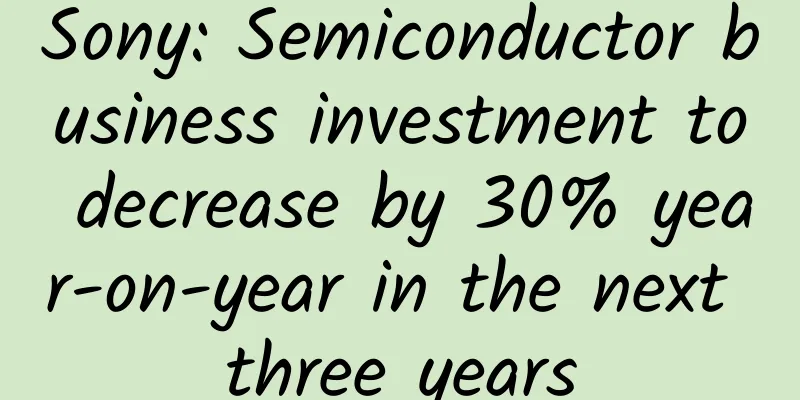Hongmeng is on the road, and Huawei is on board

|
After more than a decade of rapid development and gradual move towards "notebookization", terminal manufacturers have also begun to look for the next opportunity. Although different manufacturers have chosen different development paths due to their own objective conditions, no matter which manufacturer it is, it cannot be denied that smart cars will be the largest blue ocean in the future technology field. Faced with such an obvious technological trend, some manufacturers remain unmoved, mainly because automobiles are "heavy industry" products. Unlike portable electronic devices such as computers and mobile phones, automobile products have high operating costs on the one hand and high technical barriers on the other. They are destined to be an arena for high-end players. Against this background, Chery Automobile accidentally exposed a new car poster containing the word "Hongmeng". In addition, Huawei has also frequently made its presence felt in the automotive field. All these signs make us believe that after gaining an absolute advantage in the mobile phone field, Huawei cars can't wait to hit the road. Smart cars now have two focuses: electrification and intelligence. Popular car companies including Tesla, Weilai, and Xiaopeng are currently focusing on the development of electric cars. Of course, the choices of these manufacturers also reflect the direction of policy guidance and the actual needs of consumers. For example, what Tesla Model 3 is most proud of is its power management system, which can achieve a range of 595 kilometers under national standard operating conditions. This has also become the main benchmark for subsequent smart cars. However, we cannot ignore that the electrification of automobiles is merely an upgrade in the hardware of the automobile. For consumers, electrification simply reduces the cost of using the car and does not involve deep-level product changes. The car is still just a means of transportation. In addition, although electric vehicles are the general trend at present, the continuous development of hydrogen energy, fuel and other technologies may also surpass lithium battery technology and become the mainstream of the market in the future. Therefore, the energy aspect of new energy vehicles does not develop linearly. Once there is a change in energy technology, it will greatly affect the market structure of new energy vehicles. Precisely because of these two problems, Huawei did not launch hardware products right away in the automotive field. Instead, it worked on the core hardware of electric vehicles on the one hand, and created intelligent solutions at the software level on the other. The core hardware of new energy vehicles is mainly the "battery, motor, and electronic control" three-electric system, and Huawei's self-developed mPower three-electric system obtained the German Rhine TÜV safety certification in early 2020, which means that Huawei's mPower three-electric system, whether in research and development or production, has fully met the requirements of the highest level of automotive functional safety "ASILD". At the same time, Huawei is also a manufacturer that has a self-developed three-electric system in the market, except for a few car companies such as Tesla and BYD. Secondly, in terms of intelligence, Huawei has three main layouts: the first is to build a system, the second is to strengthen the interconnection between automobiles and other products, and the third is to focus on building high-level autonomous driving technology. As early as the Huawei Developer Conference in mid-2019, Huawei released the micro-kernel full-scenario distributed system - Hongmeng OS, which aims to include hardware for travel, home and other scenarios through one system. Previously, it was also reported on the Internet that Geely and Chery will be the first to launch smart cars equipped with Hongmeng OS. The exposure of Chery's promotional poster has increased the credibility of Hongmeng OS. In addition, Huawei also launched the 5G vehicle-mounted MH5000 module developed based on the Balong 5000 5G, which can help cars achieve wider product connections in the 5G era. This obviously caters to the trend of the Internet of Everything after the decentralization of 5G technology. In terms of autonomous driving, Huawei's in-vehicle computing platform and intelligent driving subsystem solution MDC have long been certified by the German Rhine TüV Group for ISO 26262 functional safety management. In addition, Huawei has also released the MDC600 optimized for vehicle-road collaboration, which will achieve L4 autonomous driving. In terms of smart cars, Huawei has taken a different path from ordinary people. At the hardware level of smart cars, it only studies the core technologies of the product, such as the three-electric system and 5G modules, and on this basis, it focuses on the development of intelligence and electrification of smart cars. Although at first glance, Huawei Auto has taken a path less traveled, this does not mean that it will not have a profound impact on the entire automotive industry. The reason why Huawei only focuses on the core hardware and intelligence of smart cars is probably because of these two reasons: the rapid iteration of products and the rapid building of an ecosystem, which are what Huawei is good at and do not involve specific physical manufacturing. From a product perspective, Huawei has focused on new energy core hardware technologies such as the mPower three-electric system and 5G modules, and then licensed them to manufacturers. This can not only avoid excessive investment and the inability to change direction in the future, but also keep abreast of the development trends of new energy at all times, allowing it to maintain a rapid iteration rhythm. Hongmeng is on the road, and Huawei is on board. Let's wait and see what the future holds. As a winner of Toutiao's Qingyun Plan and Baijiahao's Bai+ Plan, the 2019 Baidu Digital Author of the Year, the Baijiahao's Most Popular Author in the Technology Field, the 2019 Sogou Technology and Culture Author, and the 2021 Baijiahao Quarterly Influential Creator, he has won many awards, including the 2013 Sohu Best Industry Media Person, the 2015 China New Media Entrepreneurship Competition Beijing Third Place, the 2015 Guangmang Experience Award, the 2015 China New Media Entrepreneurship Competition Finals Third Place, and the 2018 Baidu Dynamic Annual Powerful Celebrity. |
Recommend
Green Hunt: Small sensors make urban pollutants invisible
Refined ecological environment governance is a ne...
It's about the college entrance examination! Be careful of these "pitfalls"!
The college entrance examination is a major test ...
Waymo means autonomous driving technology is mature, but it is not really a car company
Back in the 1960s, when Steve Mahan was a kid, hi...
7 key points you must know when starting to operate Douyin
I have summarized and sorted out some universal a...
Microsoft copied more OS X gestures in Windows 10
According to a report by The Verge, a Windows 10 ...
Offline traffic: the core value of elevator advertising!
In the fragmented era of mobile Internet, we chec...
96 bottles of beer a day, no matter how much you drink, you can't beat a hamster
After a few drinks at a party, you may feel dizzy...
One article explains user activation!
User activation, as a key link in the user growth...
Apple's atypical innovation: making money from user loyalty
The industry knows that Apple has always used so-...
Does high blood pressure mean hypertension? Experts debunk rumors: Don’t be fooled by the illusion of high blood pressure!
I saw such a patient in the outpatient clinic on ...
In 2021, many websites will stop working on older versions of Android
Certificate authority Let's Encrypt has warne...
How to promote Xiaohongshu notes to become popular?
It is indeed difficult for a new account to becom...
Learn character design with Hollywood animation masters 2020 [good quality]
Learn character design with Hollywood animation m...
A complete guide to operating work and improving operating skills
I have been engaged in Internet operations for on...
How did the 100,000+ posts on Toutiao, UC, and WeChat come about?
After a piece of content is produced, how to dist...









